English | Dutch |
|
| Mt Nemrut in winter | |
Midyat (Turkey), February 22nd 2014
|
|
| |
|
A visit to eastern Turkey is probably not complete without a visit to the Nemrut Dagi National Park. On Mt Nemrut, a pre-Roman king built huge statues of himself and the gods (whom he regarded as his family) and this is one of the most iconic sights of the region. As we travel around eastern Turkey in winter, we were prepared for the fact that we might not be able to see Mt Nemrut. Winter is very harsh in this part of the world, so the national park is typically visited between late May and early October. Outside of these months, roads are often impassable through a thick layer of snow. This year everything is different. We travel already a month through Turkey and this winter is extremely mild. The most recent snowfall was apparently in the first week of January and we get some hope that we can see something from Mt Nemrut. Early February, we contact a guesthouse in Karadut, a village only twelve kilometres away from the summit of the mountain. The mountain appears accessible, although we will have to walk the last five kilometres to the top. |
|
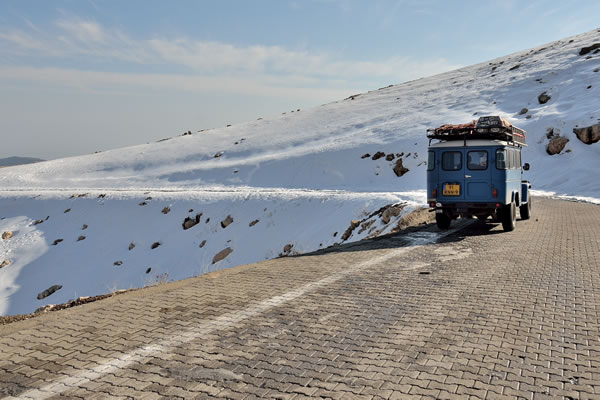 |
|
We have to leave the car 5 km below the top. Snow prevents going further. |
|
It's a beautiful day when we drive to Karadut. The sky is blue and the sun is shining. We decide at arrival to drive directly towards the top of the mountain, to take advantage of the beautiful weather. After all, in the mountains you never know if it's just as good the next day. When we start driving on an altitude of 1.000 metres, it is almost inconceivable that the road to the summit is not yet completely accessible, but it turns out to be the case. Just five kilometres below the summit (1.500 meters) the road is abruptly covered with a thick layer of snow. We park the car and walk the last five kilometres to an altitude of 2100 meters. The pace is high, as we want to be back at the guesthouse before dark. During our walk, we don’t see any other mortal. As even the ticket seller has time off during these months, we later just enter the deserted park. Paths are partly covered with snow, but because it has not snowed for such a long time, we can follow some old footsteps. Sometimes we sink into the snow until our groins, at other times we just slip and fall, but in the end we make it; we can see the images of the eastern terrace. King Epiphanes ruled several decades BC in this area and maintained good relations with both the Romans and the Parthians, the main powers his time. This gave his kingdom so much prosperity, that he saw himself as a God-king. His self-glorification took on enormous proportions. A few decades BC, he built enormous statues of himself and of the gods on the north, east and west flanks of the mountain. He also made sure that the mountain top was raised a few dozen meters with stones and boulders, so he and his three female relatives could be buried underneath this pile of rubble. Whether their bodies are still there, is everybody’s guess. The images that Epiphanes had built, survived the two millennia that followed reasonably well. Earthquakes have toppled the heads from most of the statues, and now the colossal bodies sit silently in rows with the two meter tall heads watching stoically from the ground. | |
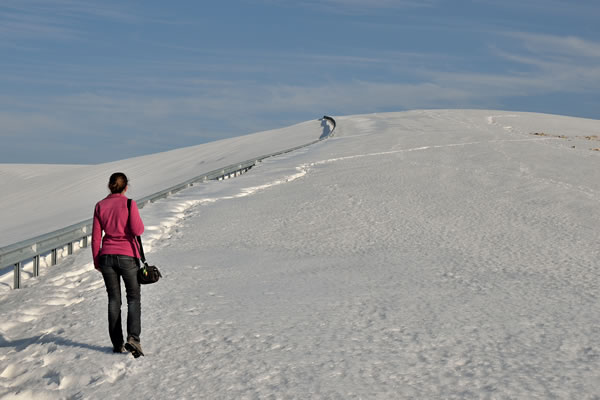 |
|
On the way to the top. Just follow the guardrail |
|
Although the images on the eastern terrace are stunning, we rush to the western terrace, as these statues are said to be even better preserved. It is only a few hundred meters, but since we walk on a steep ice slope, it is not going very fast. However, the views are worth the effort. The images are indeed more beautiful, and they have the added advantage that they lie in the sun and out of the wind. With our wet trousers and cold hands this is more than welcome. Some heads are still largely underneath the snow and the bodies on which they once were are not visible at all, as they are completely buried under the snow. However, we could not have imagined a nicer visit. During the high season, between 1000 and 1500 people are visiting this site every day and now we have the mountain for our own. The snow gives it a serene appearance and a day later it becomes clear how well our decision was, to go to the mountain top on the day of our arrival. |
|
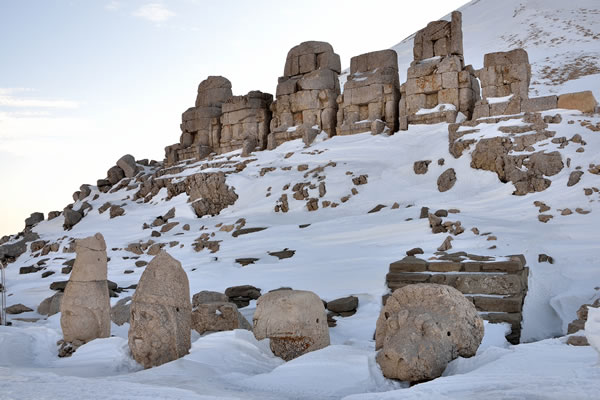 |
|
The statues of the eastern terrace |
|
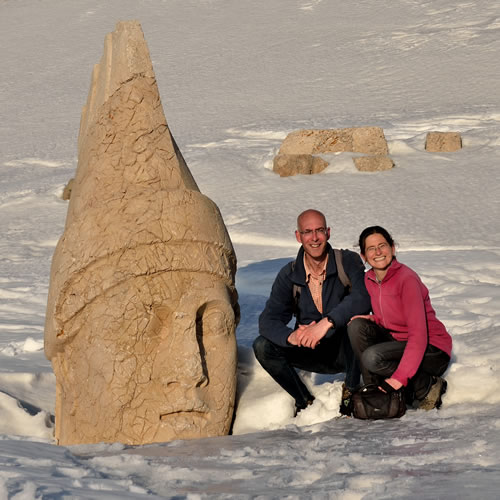 |
|
Us and a huge stone head on the western terrace |
|
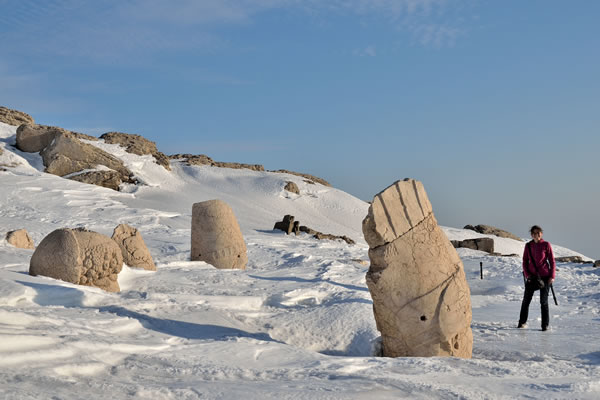 |
|
Fortunately, the snow didn't cover the whole statues |
|
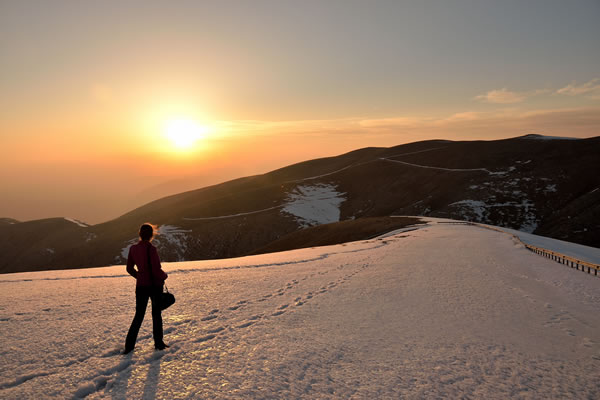 |
|
Time to go down. When the sun disappears, the temperature drops sharply |
|
 |
|
Exploring the area around Mt Nemrut |
|